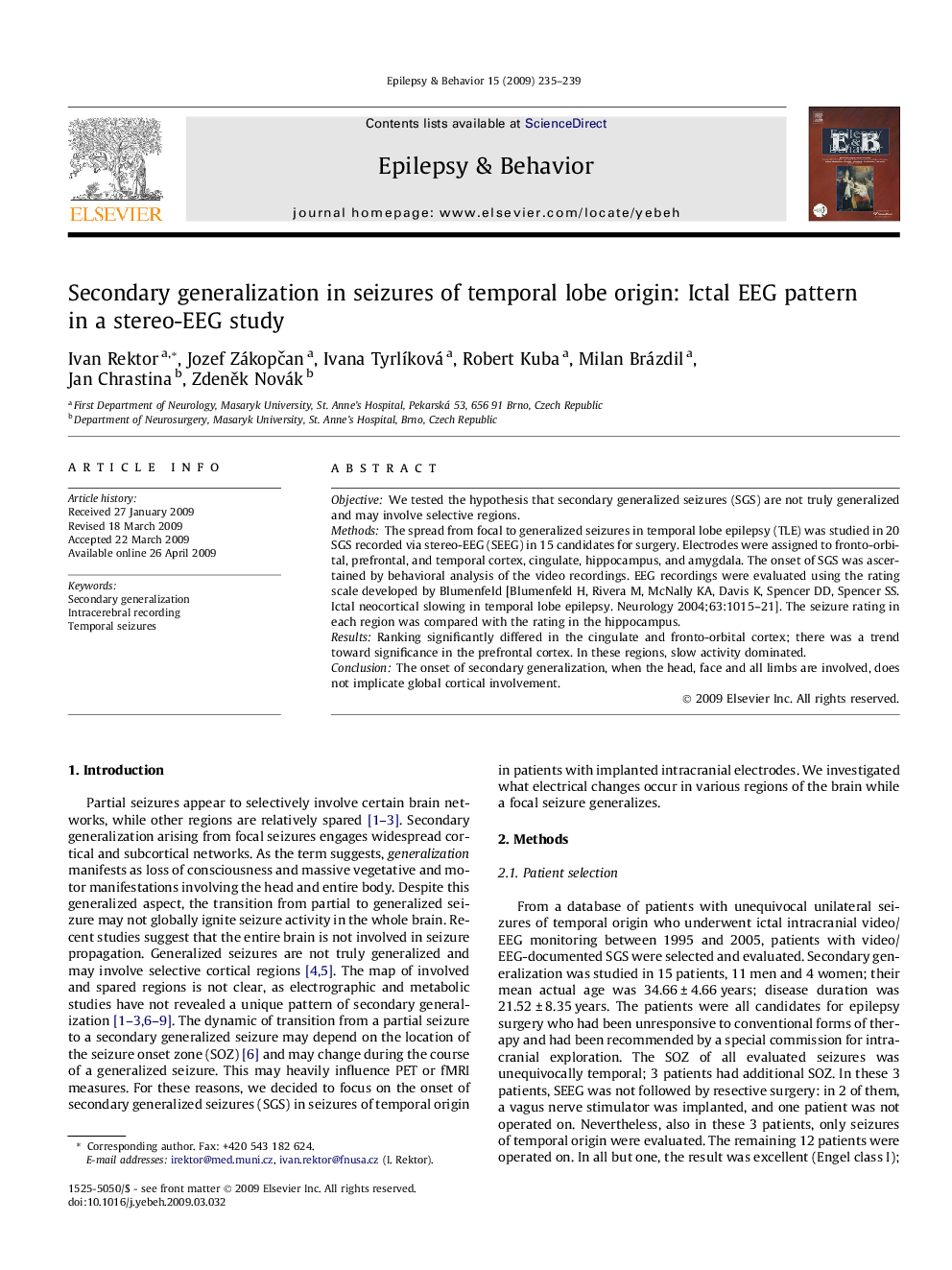| Article ID | Journal | Published Year | Pages | File Type |
|---|---|---|---|---|
| 3050661 | Epilepsy & Behavior | 2009 | 5 Pages |
ObjectiveWe tested the hypothesis that secondary generalized seizures (SGS) are not truly generalized and may involve selective regions.MethodsThe spread from focal to generalized seizures in temporal lobe epilepsy (TLE) was studied in 20 SGS recorded via stereo-EEG (SEEG) in 15 candidates for surgery. Electrodes were assigned to fronto-orbital, prefrontal, and temporal cortex, cingulate, hippocampus, and amygdala. The onset of SGS was ascertained by behavioral analysis of the video recordings. EEG recordings were evaluated using the rating scale developed by Blumenfeld [Blumenfeld H, Rivera M, McNally KA, Davis K, Spencer DD, Spencer SS. Ictal neocortical slowing in temporal lobe epilepsy. Neurology 2004;63:1015–21]. The seizure rating in each region was compared with the rating in the hippocampus.ResultsRanking significantly differed in the cingulate and fronto-orbital cortex; there was a trend toward significance in the prefrontal cortex. In these regions, slow activity dominated.ConclusionThe onset of secondary generalization, when the head, face and all limbs are involved, does not implicate global cortical involvement.
